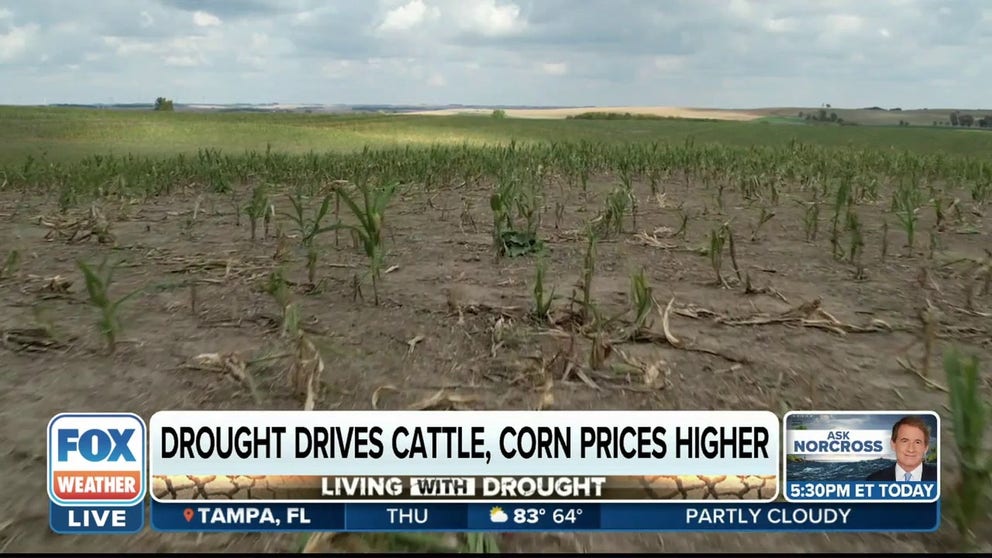Drought-ravaged corn is starving the cattle industry and hiking up grocery bills
One Great Plains farmer says beef prices would need to go up by 30% just for his ranch to break even.
Drought driving up feed-corn prices, hitting cattle ranchers hard
FOX Business' Connell McShane reports from a drought-stunted cornfield. Less corn means higher prices for cattle feed. One farmer said beef prices next year would have to rise by 30% for the ranch to break even.
Drought is taking its toll on corn crops across the Great Plans and threatening to take cattle ranches down too. For more than two years, at least 40% of the U.S. has endured a moderate drought, according to the National Drought Mitigation Center.
Now the prolonged rain shortage is causing the dominoes to fall across the area. Corn makes up about 95% of the primary feed grain for cattle in the U.S., according to the U.S. Department of Agriculture. Hogs and poultry also eat corn.
US EXTENDS DUBIOUS RECORD OF 106 CONSECUTIVE WEEKS WITH AT LEAST 40% OF NATION IN DROUGHT
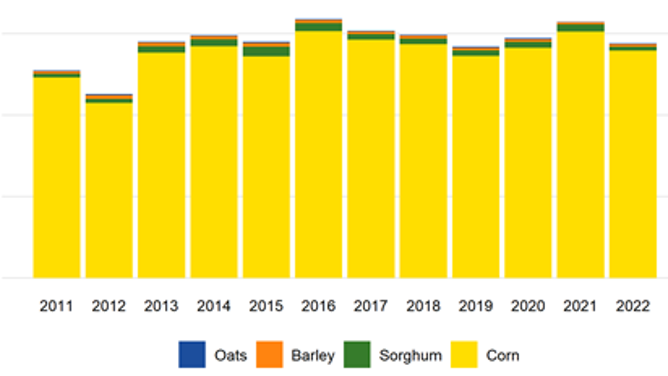
The yellow on the chart shows the number of billions of bushels corn provides to the U.S. feed grain production, as of September. 2021 was also a drought year.
(USDA, National Agricultural Statistics Service)
"I'm standing in the middle of a cornfield that, if this was a normal year or in other words, if the corn was growing the way it was supposed to be, you wouldn't even really be able to see me right now," FOX Business’ Connell McShane reported from Wakefield, Nebraska. "It would be way up above my head. But now I look at this, maybe knee-high at best."
McShane visited field after field in Wayne County and found the same short stalks with very sparse ears. Over 99% of that county is in exceptional drought.
"It seems like we are just so dry and I really don't know what's going to change that," Felt Farms rancher, Merlin Felt, told McShane.
HOW TO WATCH FOX WEATHER ON TV
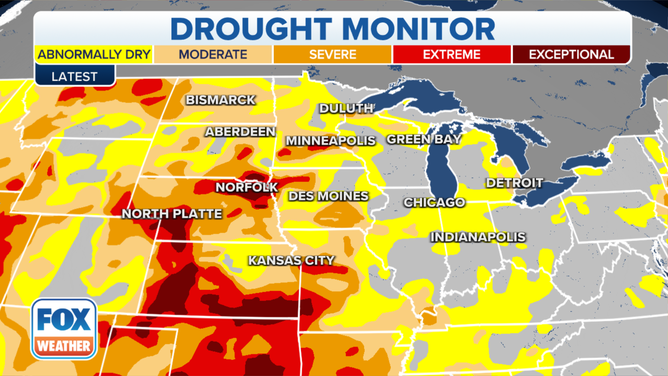
40% of the country is in at least moderate drought.
(FOX Weather)
Felt said that if the drought continues, he will need beef prices to go up by 30% by next year, just to break even.
Corn production and quality down
The USDA reports that corn production is 172.5 bushels per acre, down 8% from last year. The agency even downgraded its own estimate from last month by 2.9 bushels per acre as drought conditions persist. Making matters worse, only 54% of the year’s corn crop is reported in good to excellent condition.
More farmers find themselves victims of drought. In recent years higher corn prices due to strong domestic demand for livestock feed and ethanol prompted many farmers to shift from other crops to corn, according to the USDA.
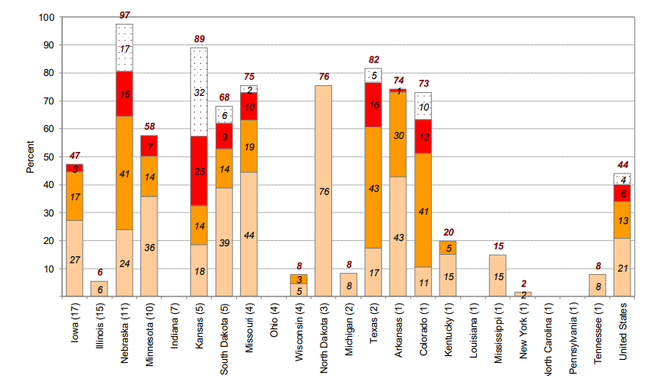
States in the corn belt can only produce a percentage of what the crop would produce in a non-drought year.
(US Drought Monitor, NASS 2017 Census of Agriculture / FOX Weather)
But, drought conditions have caused a pullback. Just in this past year of drought, the USDA data shows areas planted in corn dropped 5% to 80.8 million acres – that is down 1 % from last month and down 5% from what was harvested last year. That further drops the corn supply.
Beef prices already up since 2021
Beef and veal prices are already up 2.5% since last August per the USDA. The agency forecasts a further increase of 5.5% to 6.5% through the end of the year.
HIGH GROCERY BILL? BLAME THE WEATHER
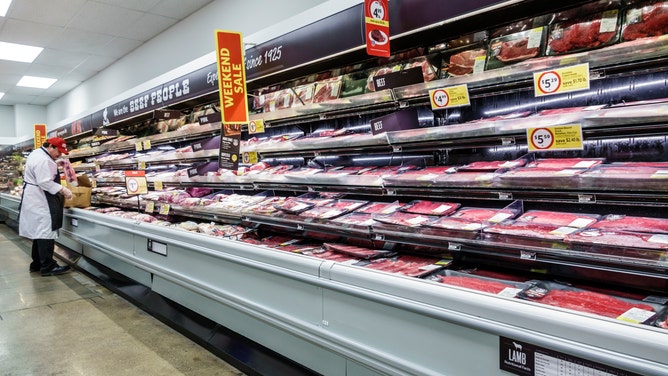
The meat aisle in a grocery store.
(Jeffrey Greenberg/Education Images/Universal Images Group / Getty Images)
While shoppers have noticed the increase in prices, a bigger hike could be on the horizon. Farm-level cattle prices are up 17.6% from last year reports the USDA. Unfortunately for Felt Farms, the price is well below the 30% Felt is hoping for.
Western ranches have already started culling their herds on cattle ranches and dairy farms due to drought.
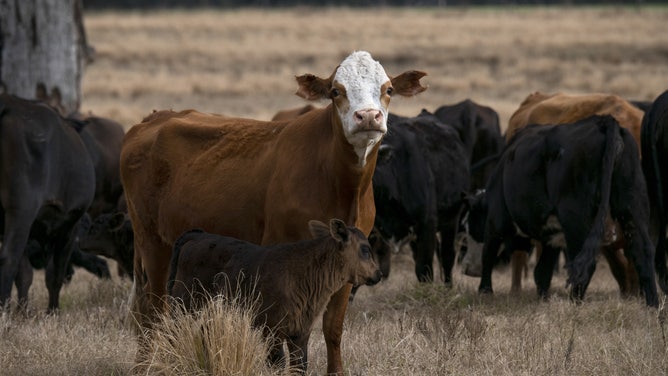
A cattle ranch in the U.S.
(Ty Wright/Bloomberg / Getty Images)
Around 40% of domestic corn goes to feed corn. Almost 45% goes to fuel ethanol production. Traditionally, 10% to 15% is exported. The amount exported could change due to the war in Ukraine. The country is traditionally a significant corn producer. The rest is used for seed and industrial uses like sweeteners, according to the USDA.
